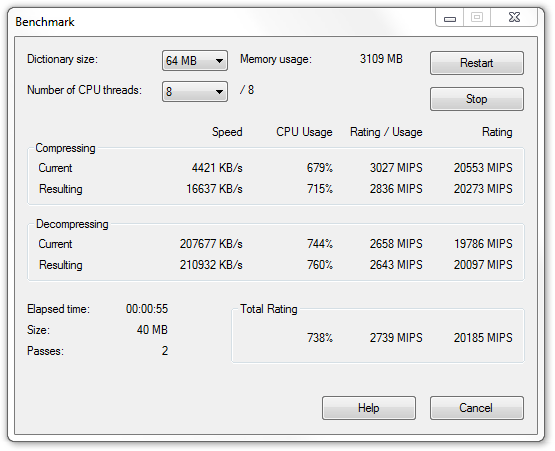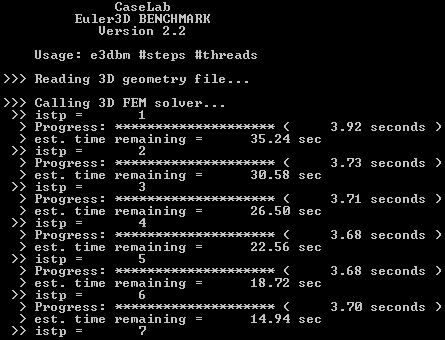- Qualcomm Launches Snapdragon 4 Gen 2 Mobile Platform
- AMD Launches Ryzen PRO 7000 Series Mobile & Desktop Platform
- Intel Launches Sleek Single-Slot Arc Pro A60 Workstation Graphics Card
- NVIDIA Announces Latest Ada Lovelace Additions: GeForce RTX 4060 Ti & RTX 4060
- Maxon Redshift With AMD Radeon GPU Rendering Support Now Available
Intel Core i7-3960X Extreme Edition Review

To those looking to build the biggest, baddest high-end PC around, the wait for Sandy Bridge-E was no doubt painful. But, it’s finally here, and much to our expectations, Intel has once again solidified its position as the performance leader. So let’s take a look at what it offers, and compare it to the i7-990X, i7-2600K and AMD FX-8150.
Page 9 – Mathematics: 7-Zip & Euler3D
When hard drives densities measured in the megabytes or single-digit gigabytes, data compression became something that even the layman computer user took advantage of. In fact, even entire hard drives could be used in compressed mode to help increase the overall storage. Today, such methods aren’t required thanks to hard drives ranging in the thousands of gigabytes, but compression is still used on a regular basis by many people, either for storing a folder for backup, encoding music, converting a photo and et cetera. On servers, compression is often used to shrink mega-large log files.
For our compression testing, we enlist the help of 7-zip 9.20; both with a real-world and synthetic test. With its built-in benchmark, we set the dictionary size to 64MB and then let it do its thing. After recording those results, we take a 772MB folder that consists of 39,236 highly-compressible files and archive it using an ‘Ultra’ level of compression using the LZMA2 algorithm. This results in an archive weighing in at about 137MB.



In our real-world test, the differences between all of the processors were minor. Both six-core CPUs delivered an equal result, and the others didn’t fall far behind. Where the built-in benchmark is concerned however, major benefits can be seen. In order to actually experience these sorts of performance increases in the real-world, you’d need a specific workload – not just any compression job will do.
Euler3D
In terms of complexity, Euler3D is one of our most advanced benchmarks, and also one of the quickest to run. It calculates the fluid dynamics properties of the AGARD 445.6 aeroelastic test wing as it was tested in-house at NASA’s Langley Research center. It’s calculated using Euler equations, with results printed out as Hz and time-to-complete (seconds). A benchmark such as this is useful to those who work designing products where physics has to be considered, whether it be a wing, a car, a ship and so on.


Like most of the Sandra benchmarks we run, Euler3D is said to be infinitely scalable, so any CPU with lots of cores and a high frequency is sure to top the charts. With these results, we can also see that architecture advances can also greatly improve performance.
Support our efforts! With ad revenue at an all-time low for written websites, we're relying more than ever on reader support to help us continue putting so much effort into this type of content. You can support us by becoming a Patron, or by using our Amazon shopping affiliate links listed through our articles. Thanks for your support!





